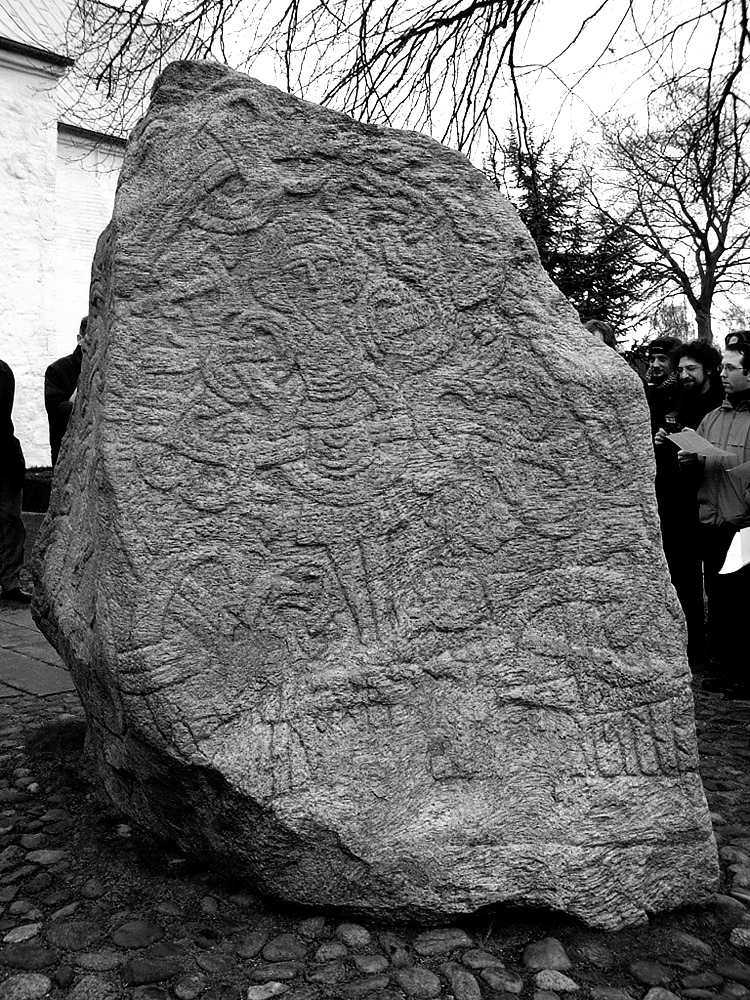
The Jelling Stone Crucifixion
10th century
Jelling, Denmark
This is the smaller of two large stones in the Jelling churchyard. A runic inscription on the stone says it was erected in memory of his parents by Harold Bluetooth (circa 935-85) "who made the Danes Christian."
Jesus' eyes are closed. His face is enclosed by the familiar crossed halo; its shape ends in a long point, like the face on a Danish crucifix from earlier in the century (see this news article). As in that crucifix, his arms are at right angles to the body in a gesture of welcome. Like other Crucifixions before the 13th century he wears a colobium.
Kure (69-70) points out that it was common in the Viking age to picture a male figure bound in the curving branches of a tree. In the pagan context, the branches represented the "World Tree" of Norse mythology and the male figure represented Odin drawing up wisdom from below. Given the inscription, this context is clearly Christian, so Kure concludes that the stone is saying, "Christ has taken the place of Odin." If so, the replacement would not be simply of one divine figure for another. In the myth Odin hung from the tree as a gift of "self to myself" (Kure, 68) whereas the Jesus figure's open arms and liturgical garb reference the belief that his death was a sacrifice for the onlooker.
Read more about images of the Crucifixion.
Source: this page at Wikimedia Commons.